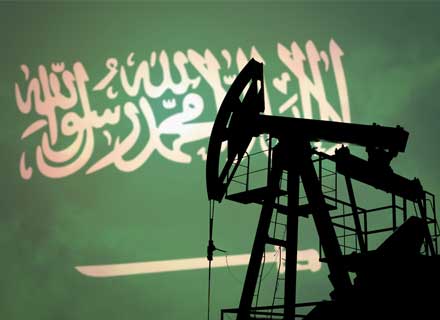Saudi Arabia’s economy is likely to grow at a slower pace of 3.1% in 2023 compared to a robust 8.7% growth recorded in 2022, according to London-based data and analytics firm GlobalData’s recent outlook.
The reduction in oil production, in line with the decision by OPEC+ to cut oil production until 2023-end, is expected to impact the Kingdom’s economy as the oil sector accounts for more than 45% of the country’s GDP.
Additionally, the slowdown in economic activities and subdued external demand will likely affect the country’s trade prospects, as per the GlobalData report.
Bindi Patel, Economic Research Analyst at GlobalData, while interacting with the Zawya, stated that the subdued economic activities in Europe and the American continents are expected to slow Saudi Arabia’s export growth to 5.9% in 2023 from 6.3% in 2022 and 47.1% in 2021.
On the other hand, benign inflation rate (2.6% in 2023 forecast vs. 2020-22 average of 3%) and declining unemployment rate (6% vs. 6.8%) are projected to keep the domestic demand buoyed with real household consumption expenditure likely to grow by 4.4% in 2023 compared to 3.7% in 2022, the official added.
The diversification efforts of the Saudi economy are exhibiting fruitful results as the share of the service sector in the overall gross value added increased from 40.1% in 2000 to 48.5% in 2022. In contrast, the industry sector contribution declined from 54.9% to 49.1% during the same period.
“The economy still significantly depends on the oil and gas sector, which makes it vulnerable to oil price shocks,” Bindi Patel said, maintaining that the Saudi government must continue its transformation efforts at a fast pace to make the economy resilient to external shocks.
Saudi Arabia’s General Authority for Statistics recently released its initial estimates of real GDP scores for the first quarter 2023, which showed that the country’s economy grew at a pace of 3.9%. While this marked a slowdown in pace to the 5.5% growth the previous quarter, economic activity will be growing further over the rest of 2023.
The non-oil revenues increased by 9% in Q1 2023 while oil revenues declined by 3%, as per the Saudi government stats, thus further boosting ‘Saudi Vision 2030’, under which the Kingdom aims to diversify non-oil exports and increase its share of non-oil GDP from 16% to 50%.
According to the Ministry of Finance, Saudi Arabia reported a budget deficit of SR2.91 billion in Q1-23. The actual revenue flow increased 1% to SR280.94 billion of which oil revenue amounted to SR178.61 billion, as per the stats.
Expenditures also shot up 29% year-over-year to SR283.9 billion. In its first quarter budget, the government allocated SR52.1 billion for education, SR58.9 billion for defence, and SR49.6 billion for health and social development. Saudi Arabia also lowered its public debt by 2.89% to SR962.25 billion during the first quarter as cash inflows remain resilient.
Moving forward, analysts are anticipating a budget surplus Saudi economy for the first time in eight years.

